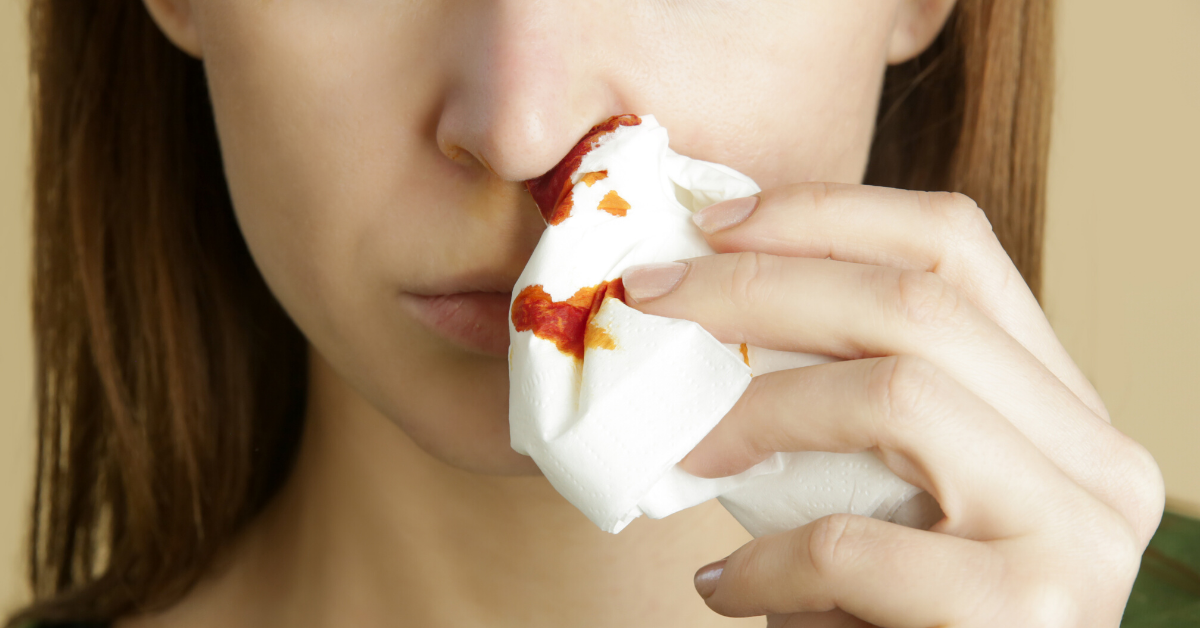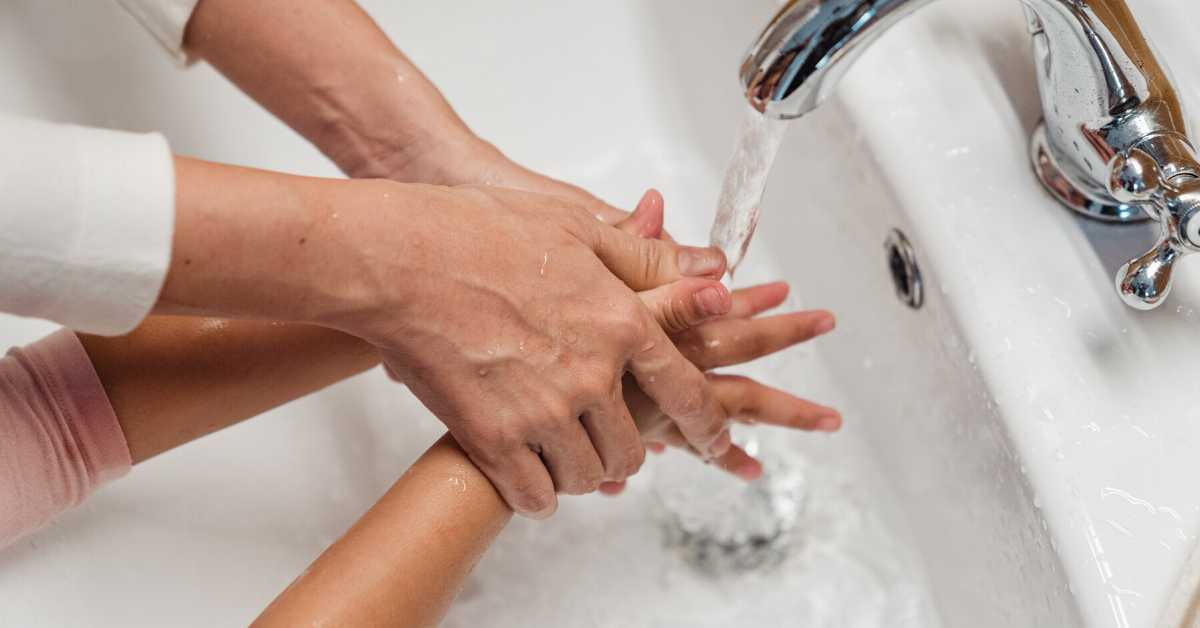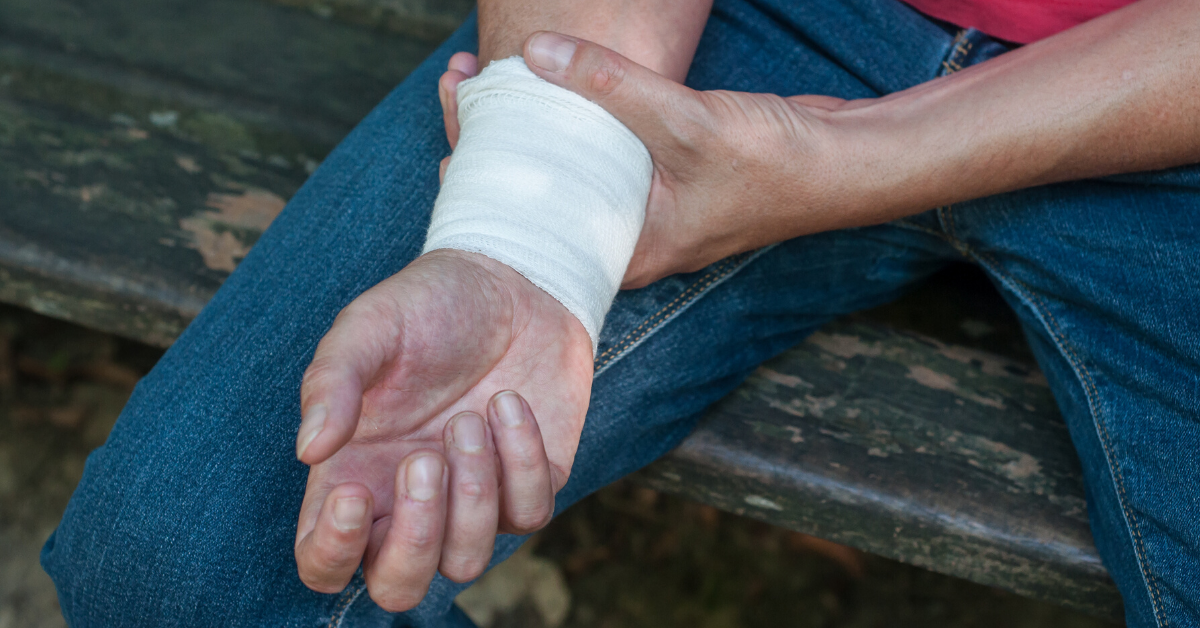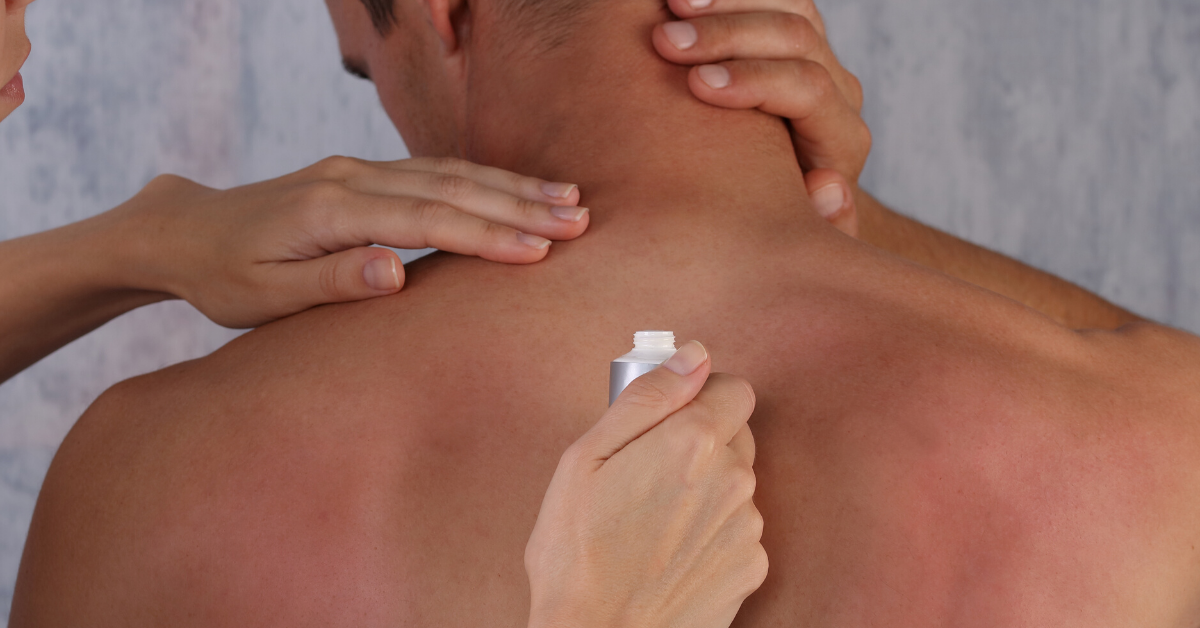
Five basic first aid treatments for common injuries
Ah, the lazy days of summer, sitting poolside, hiking, biking, sunshine, bonfires, grilling, fireworks, playgrounds, and playdates. With an increase in outdoor activities, comes an increase in injuries. While minor injuries usually do not require an ER visit, they still need treatment to avoid infection or further damage.
Knowledge is power, especially when it comes to treating common minor injuries and preventing long-term damage. To help you prepare, we have compiled a list of common minor injuries and how to perform basic first aid procedures.
These tips are not a substitute for proper first aid training, but they can guide what you can do in the meantime. The information in this post is not a substitute for medical attention. Please seek professional medical treatment for severe injury or symptoms that worsen after applying basic first aid.
Basic first aid for bleeding

Before we talk about treatment, let’s talk about protection. Wear protective gloves when administering first aid to injuries that involve encountering bodily fluids, such as blood.
For minor wounds, clean the injured area with soap and water then blot the wound dry. Avoid cleaning with hydrogen peroxide or isopropyl alcohol, as it can damage the tissue.
Once the wound is dry, apply antibiotic ointment and cover with gauze or a bandage.
For minor cuts and scrapes, you first need to stop the bleeding. If the cut or abrasion does not stop bleeding on its own, apply pressure to it with a clean cloth or gauze. Also, keep the wound elevated. Clean the injury with soap and water, apply antibiotic ointment and a bandage. Make sure to keep an eye out for infection.
You need to consult with a doctor if you may need stitches or a tetanus shot, the injury is from a bite, you can’t stop the bleeding, you can’t get dirt out of the wound, or you have a fever of more than 100.4F.
Basic first aid for nosebleeds

Most of us have had a bloody nose or two in our lives and know that they are usually no big deal, but they still require the correct treatment.
The first aid for a nosebleed includes:
- Lean forward, not back.
- Pinch the nose just below the bridge, not the nostrils.
- Check after 5 minutes to see if the bleeding has stopped. If not, keep pinching and check after another 10 minutes.
- You can also apply a cold pack to the bridge of the nose while pinching.
- Do NOT lay on your back, tilt your head back, or stuff tissues into the nose.
Basic first aid for burns

The severity of a burn is based on depth and size. For some second-degree burns and any third-degree burn, call 911.
You can treat minor first degree burns or small second-degree burns at home. Here’s what to do:
- Place the burned area under running cool water for at least 5 minutes to stop the burning process. No matter what caused the burn, stopping the burn process comes before treating the burn.
- Apply an antiseptic spray, antibiotic ointment, or burn cream to soothe the area.
- Loosely wrap a gauze bandage around the burn
- To relieve pain, take an OTC pain medication.
- NEVER put butter on a burn or pop any blisters.
Basic first aid for fractures and sprains

All extremity injuries should be treated as broken bones (fractures) until and X-ray can be obtained.
If you suspect a fracture or a broken bone, take these steps:
- Don’t try to straighten the limb.
- Stabilize the limb using a split to keep it immobile.
- Use a cold pack on the injury.
- Elevate the extremity.
- Give anti-inflammatory drugs like ibuprofen.
Basic first aid for a sunburn

Always wear sunblock with a minimum SPF of 30. Sunburn can happen within 15 minutes of being in the sun. Seek medical care for large blisters, worsening pain, headache, confusion, nausea, fever, chills, or signs of infection.
For less severe sunburns, take these steps:
- Cool the skin by applying a clean towel damped with cool water or take a cool bath.
- Apply moisturizer, lotion, or gel.
- Drink water to prevent dehydration.
- Do not break the blisters. If the blisters break, clean the area with mild soap and water, apply an antibiotic ointment, and cover with nonstick gauze.
- Take an OTC pain reliever to help with discomfort and swelling.
- Than apply an OTC hydrocortisone cream if your sunburn is more then minor.
Every season has it’s share of injuries and mishaps, but summertime seems to have the most. Don’t get caught unprepared for common summertime injuries. Give your first aid kit a summertime check-up or print out Safetec’s Summer checklist.
Updated 5/23/24
